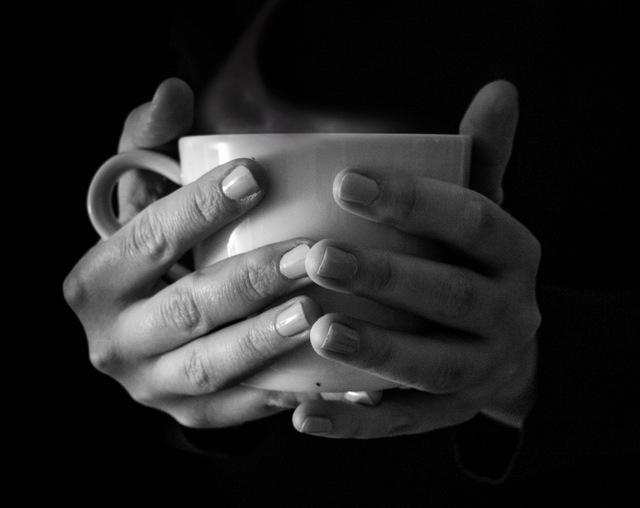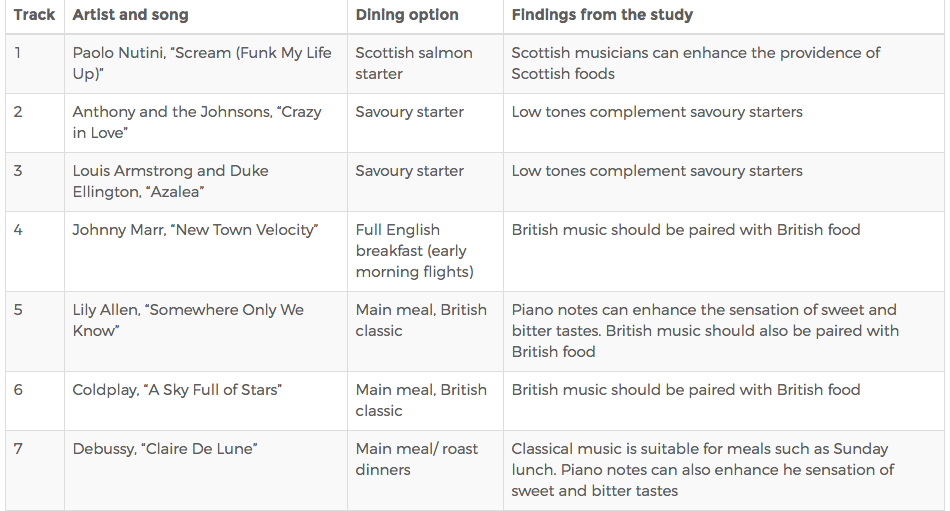Creative Thinking
Embodied Cognition: How Marketers Can Use the Psychology of Sense
By Danielle Joyce on October 26, 2016
Embodied cognition has influenced the marketing world for decades. Harvard Business Review defines it as "the idea that without our conscious awareness, our bodily sensations help determine the decisions we make."
When I was a kid, I remember leafing through the pages of my mom's magazines, skipping the articles in search of the next full-page ad to look at. While I wasn't particularly interested in what the advertisements were selling, I would take in the colors, the visuals, and the sensations in the same way that I would leaf through a vibrantly illustrated children's book.
I particularly remember being drawn to the vibrant makeup ads that featured bright eye shadow, bold, freshly applied lipstick, and glamorous backgrounds of cityscapes or cocktail parties. It was as if I'd stepped into a rich and colorful alternate world that was just a little more enchanting that my own.
I didn't know it at the time, but when losing myself in the world of those advertisements, I was experiencing a form of embodied cognition. By using particular colors and images, the ads were appealing to my self-conscious, causing me to associate their products with glamour and sophistication.
 Senses and Self-Consciousness
Senses and Self-Consciousness
A lot of research has been conducted around the human self-conscious, and how our outward sensations can influence our perceptions of the people and things around us. For example, research led by Xun (Irene) Huang of Sun Yat-sen University found that participants in warm rooms were more prone to conformity, being more likely to buy the TV remote preferred by the majority of others in the room and to bet on the favorite horse in a race. A similar experiment on the effects of physical warmth by Lawrence Williams of the University of Colorado at Boulder and John Bargh of Yale found that participants holding a warm cup of coffee (as opposed to an iced coffee) were most likely to deem strangers as having warm personalities, and those holding a hot (rather than cold) therapeutic pad were more likely to choose a gift for their friends over one for themselves.
Create Sensory Experiences Through Creative Thinking
When thinking of how to apply these findings to the marketing world, food and drink are often the first things that come to mind. Whose mouth hasn't watered at the image of a Hershey's Kiss being slowly unwrapped from its foil, or at Buzzfeed's mesmerizing Tasty videos-which turn watching simple tasks like chopping vegetables or blending ingredients into full-on sensory experiences?
But while the food world may be the most obvious choice, more diverse brands are getting on board, using creativity and cutting-edge technology to tap into all five of their audiences' senses. Here are three ways brands are pushing the boundaries of what sensory marketing can do.
1. Take advantage of all five senses: Lincoln
Aradhna Krishna, director of the Sensory Marketing Laboratory at the University of Michigan and author of Customer Sense: How the 5 Senses Influence Buying Behavior, noted in "The Science of Sensory Marketing" that many consumer industries focus too much on the visual attributes of their products and give little thought to the other senses. She said that this needs to change, and encouraged marketers to think about their products in different ways-such as asking questions like: What scents or sounds are associated with my brand identity, and what's the best way to convey those sensations to consumers? For example, "bank executives should make sure that branch offices exude the reassuring, wealth-suggesting aromas of wood and leather, [and] manufacturers of products with embedded motors should think about those products' sounds-are they tinny whines or solid, low-pitched hums?" Once you start thinking of your brand identity in terms of all five senses, it will become easier to move beyond the visual and start thinking outside the box.
While car commercials often appeal to the visual and tactile attributes of sensory marketing, the recent '17 Lincoln MKZ commercials manage to merge all five senses together in a series of three short commercials entitled "Shave," "Ensemble," and "Midnight." These ads feature Matthew McConaughey having three separate sensory experiences-getting shaved, listening to live jazz music, and jumping into a pool at night-all of which are interspersed with cuts of him driving the '17 Lincoln. While he doesn't say anything in the ads, the memorable images touch on all 5 senses, and cause viewers to associate those feelings with the sensations of driving a Lincoln, and with the overall Lincoln brand.
In an article for the Detroit Times, Michael Wayland wrote:
Jon Pearce, chief creative officer of Hudson Rouge, Lincoln's agency of record that created the ads, said each is meant to convey or express the "'It's like that' moment" of exhilaration, precision and performance.
By focusing less on attributes of the car itself and more on creating a complete sensory experience for the viewer, Lincoln has managed to create the sensation of driving one of its cars, conveying a brand identity in just three short, sharp images.
Lincoln has been at the forefront of sensory marketing for a while now, as in 2014, they hired master perfumer Rene Morgenthaler to create a specialized scent to use in showrooms. Instead of the predictable "new car smell," they've fully embraced embodied cognition by featuring green tea to encourage a sense of "upscale well-being," as well as jasmine and tonka to promote relaxation. With this perfume, Lincoln's goal was use the connection between scent and memory to "reinforce brand identity" on a subconscious level.
2. Pair specific sensations together for an optimal sensory experience: British Airways
Krishna explained that she got into the field of sensory marketing because she was interested in how different senses can work together to enhance a particular experience, such as why wine tastes better in a wine glass than in a water glass, or why certain smells can enhance the taste of food. In her research, Krishna realized that "senses can amplify one another when they are congruent in some way."
In the past few years, brands have been experimenting with ways to merge different senses, sometimes in unlikely ways, to improve the consumer experience. British Airways' pairing of sound with food, a technique known as "sonic seasoning," pushed the boundaries of creative thought to enhance the taste of in-flight meals. Drawing upon a study by Charles Spence, who discovered that "what we hear (be it music, the sounds we make while eating, or even pure tone or bursts of white noise) can have a dramatic effect on our perceptions of food and drink," it's created a 13-song playlist that customers can pair with their in-flight meals. Airline food has long had a reputation of being less that top-quality. According to British Airways' chef Mark Tazzioli, "Your ability to taste is reduced 30 percent in the air, so we do everything we can to counteract this." By pairing specific sounds with its food, British Airways hopes to fool your palate into finding the meals more flavorful on their own without needing to add an abundance of salt, pepper, or sugar.
While the idea has been met with some resistance, as people tend to be very particular when it comes to music, and selecting a playlist that suits everyone's tastes is no easy feat, brands can learn a lot from the idea of merging different senses together in innovative ways. When you're working with a product, such as airline food, where there's only so much you can do to better its quality on its own, some creative thinking can help you find ways to enhance to overall experience associated with that project can have dramatically positive results.
3. Use sensory images to associate your brand with a lifestyle
As mentioned at the beginning, research has shown that consumers are more responsive and likely to be open to your message if they're feeling some sensation of warmth, whether it's being in a warm room, holding a warm mug, or in Corona's "Find Your Beach" campaign, viewing images of warmth.
Corona's marketing evolution, which began with the simple, memorable images of the beer bottle on various tropical beaches, has evolved to showcase people drinking it on ski slopes, on hikes, and in urban areas. The idea behind this evolution is to use the idea of embodied cognition to convince consumers that, no matter where they are, they can feel like they're at the beach simply by popping open a Corona-thus bringing the brand's long-term associations with warmth and relaxation to a wider group of people. By doing this, Corona is plugging more of a lifestyle than a beer, relying on the feelings and sensations it's spent years cultivating to sell their product.
As Joseph Anthony, CEO of the Hero Group, stated, the key of successful sensory marketing is tying emotion to the brand-something Corona does very well. If you repeatedly see images of people drinking Corona in a warm atmosphere with their friends, you'll associate that beer with the nostalgia of being on vacation. "Corona doesn't promote how it tastes-it promotes how it makes you feel," said Anthony. "It makes you feel like you are on a tropical island and every time you taste it, you have a nostalgic recall of vacation." As we've seen recently in phenomenons like Starbucks' pumpkin spice latte, nostalgia is a powerful marketing tool-something Anthony believes is the most powerful sense. "If your brand can create an experience that flips a switch in the public's brain, you've succeeded in affecting their habits on a subconscious level."
The Role of Technology in Sensory Marketing
As technology plays a growing role in our everyday lives, more brands are seeking to create engaging sensory experiences for consumers through innovative developments in the tech world. Haptic technology, or "technology that communicates with a user via sense or touch" is drawing in ambitious marketers who want to create tactile experiences for their audience. For example, Stoli Vodka's mobile ads use haptic technology to enable viewers' phones to vibrate at key points in the ad, enhancing their experience by immersing them in the world of the advertisements.
Taking this a step further, in 2015, Marriott Hotels unveiled its 4-D teleporter, which blends live-action video with CGI to provide guests with a completely immersive experience where they can visit "4-D" versions of destinations such as London or Hawaii, complete with full-on sensory experiences of the warm sun, breezes blowing and water splashing their faces. In the future sensory experiences will become commonplace, inspiring marketers to continue pushing boundaries to captivate their audiences in innovative ways.


